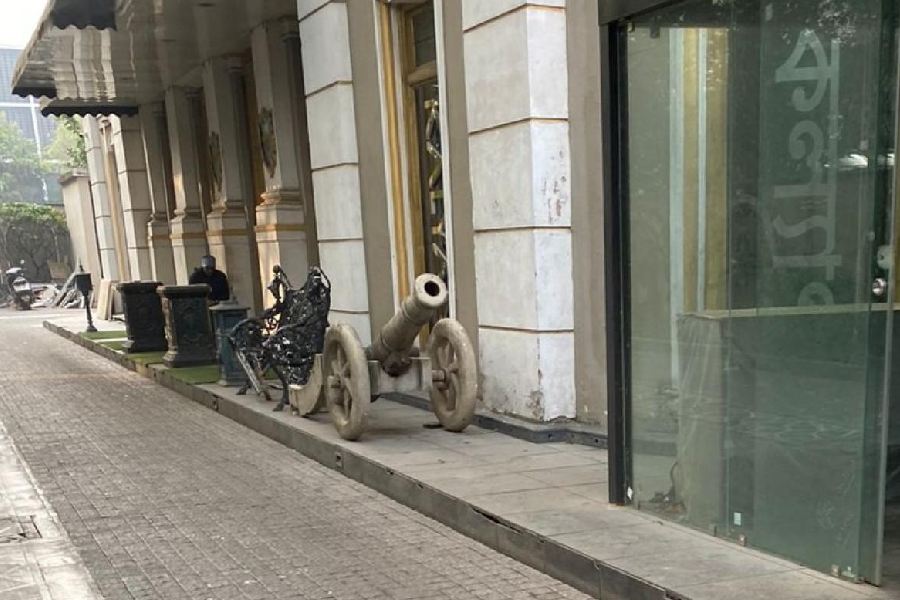A cannon measuring around 6 feet in length and its gun carriage that may once have been part of a Portuguese warship were lifted by a small crane from a building on Camac Street on Thursday.
It is likely to be displayed at a museum later.
The building on 7 Camac Street it was lifted from once belonged to Sir Rajendra Nath Mookerjee, one of Bengal’s pioneering industrialists. The house has been restored and converted into a shopping hub.
Acquin Martin and Rajendra Nath Mookerjee founded Martin & Co, which got the contract to build Victoria Memorial based on British architect William Emrerson’s design. The company also bagged the contract to build Howrah Bridge.
Around 5pm on Thursday, a group of labourers and a small crane placed the cannon on a truck.
The operation was supervised by Biplab Roy, administrator-general and official trustee of Bengal, who has collected more than 40,000 antique objects and artefacts from across the state. All of them will be on display at the Judicial Museum and Research Centre, which is being set up by Calcutta High Court
“This cannon was possibly part of a Portuguese warship’s gun battery and used to give protection to merchant vessels. This can, however, only be confirmed after more thorough studies are conducted on it,” said Roy.
Amitabha Karkun, a war history and firearm enthusiast, said the cannon was a nine-pounder gun that was commonly used on ships and land because it could be reloaded quickly.
“These cannons could fire a shot weighing nine pounds, hence the name. They were quite popular as they were very effective at close ranges. Their range could be modified by adding or reducing the amount of gunpowder in the chamber,” said Karkun.
The cannon is made out of cast-iron and is in a relatively good condition compared to some of the other cannons recovered across the city, he said.
“In those days, it was both a tradition as well as a matter of pride to keep cannons in front of houses. In many instances these were working pieces of artillery,” Karkun said.
Roy had spotted the cannon in front of the 7 Camac Street building.
“I had spotted the cannon in front of the building and sought permission from the Archaeological Survey of India (ASI) to restore it and place it in the state judicial museum,” he said.
“When I reached the building, I showed the permit from the ASI that we got to restore the cannon. We also had a word with the building management and they were happy to hand the piece over. They told me that it was getting difficult for them to maintain it. They could not move it as they were apprehensive it would get damaged,” Roy said.
Roy and his team have excavated around 15 cannons from Calcutta and its fringes.
Two cannons, both made by the Dutch, were excavated from the Hooghly riverbed in Chinsurah, Hooghly.
A cannon excavated near Dum Dum Central Jail is the largest with a barrel length of 10 feet and six inches.
Among the others is one used by Bengal’s nawab Siraj ud-Daulah.
Experts said cannons found in Bengal are usually of three categories — pre-Mughal, Mughal and European.
Karkun said the pre-Mughal cannons primarily belonged to the Husain Shahi dynasty, Sher Shah Suri and the Baro Bhuniyas, who used them to fight Mughals in and around Bengal.
Pre-Mughal cannons, he said, have geometric ornamentation on them, while the Mughal ones have floral patterns. British and French cannons are devoid of any such design.
